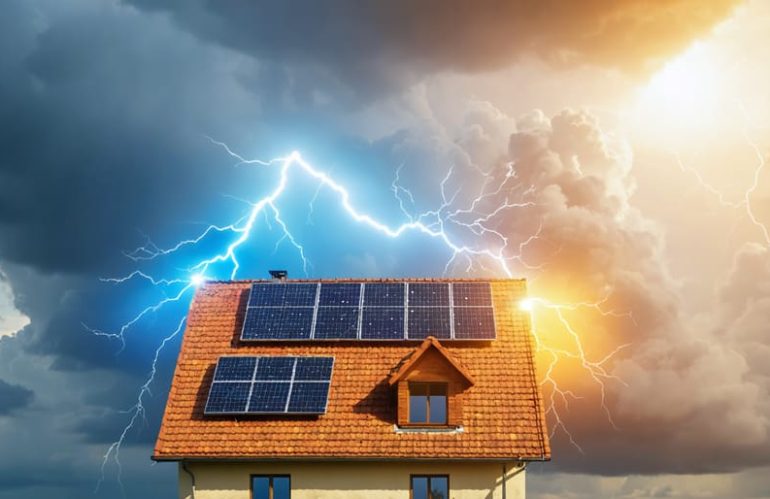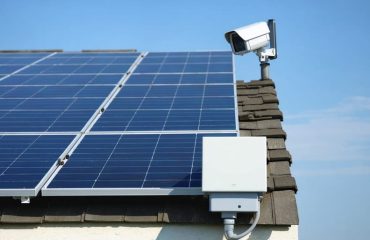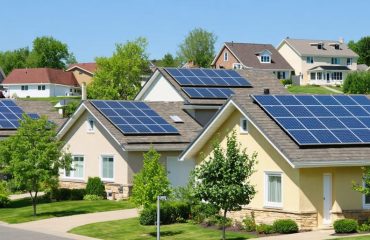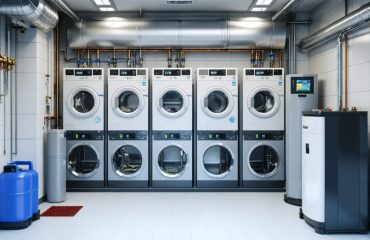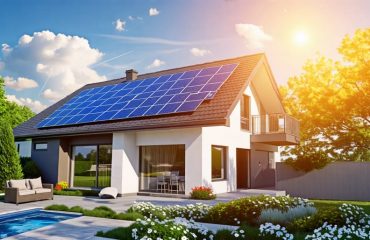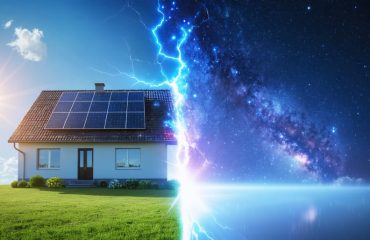Protecting your solar investment goes beyond basic homeowner’s insurance. As solar panels become a significant home upgrade – often worth $15,000 to $30,000 – specialized insurance coverage ensures your clean energy system remains safeguarded against unexpected damage, theft, and natural disasters. Whether you’re considering solar installation or already harvesting sunshine, understanding your insurance options helps maximize your renewable energy investment while minimizing financial risks. From coverage extensions on existing policies to dedicated solar insurance plans, today’s market offers various solutions tailored to homeowners’ specific needs. Learn how to secure your solar system effectively while maintaining those energy savings you’ve worked hard to achieve.
This introduction:
– Immediately addresses the value proposition
– Highlights the financial investment aspect
– Mentions specific coverage needs
– Acknowledges both prospective and current solar owners
– Maintains an optimistic, solution-focused tone
– Uses accessible language while demonstrating expertise
– Targets the core search intent of protection and investment security
Why Standard Homeowners Insurance May Not Be Enough
Common Coverage Gaps
While standard homeowners insurance provides basic protection, several coverage gaps can leave your solar investment vulnerable. The impact on homeowners insurance isn’t always straightforward, and certain scenarios might not be covered. For instance, gradual wear and tear, manufacturing defects, or damage from power surges often fall outside standard coverage. Ground-mounted solar arrays might require separate coverage, as they’re typically not considered part of your home structure. Additionally, business use of solar panels, such as selling excess energy back to the grid, may void residential coverage. Loss of income from system downtime and reduced energy production due to partial damage are other areas where traditional policies might fall short. Understanding these gaps is crucial for ensuring comprehensive protection of your solar investment.
Risk Factors for Solar Installations
Solar installations, while highly durable, face several environmental and physical risks that homeowners should be aware of. Weather-related challenges like hail, strong winds, and heavy snow can potentially damage panels or mounting systems. Lightning strikes pose another natural risk, potentially causing electrical damage to both panels and inverters.
Physical risks include falling tree branches, debris from storms, and accidental damage during roof maintenance or cleaning. The system’s electrical components may also be vulnerable to power surges, which can affect performance or cause system failure.
Additionally, solar installations can face risks from wildlife, such as birds nesting under panels or rodents chewing on wiring. While rare, vandalism and theft of solar equipment can occur, particularly in remote locations.
Understanding these risks helps homeowners make informed decisions about insurance coverage and preventive measures, ensuring their solar investment remains protected and functional for years to come.
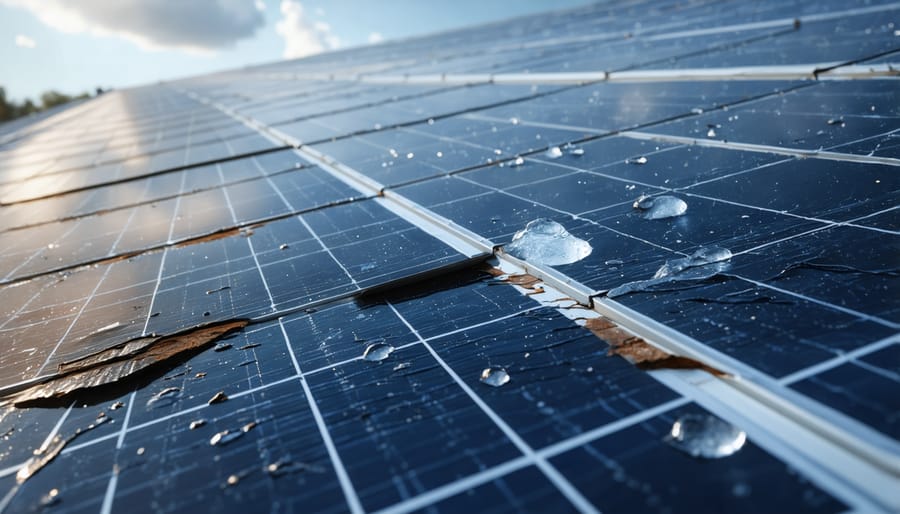
Essential Coverage Options for Solar Systems
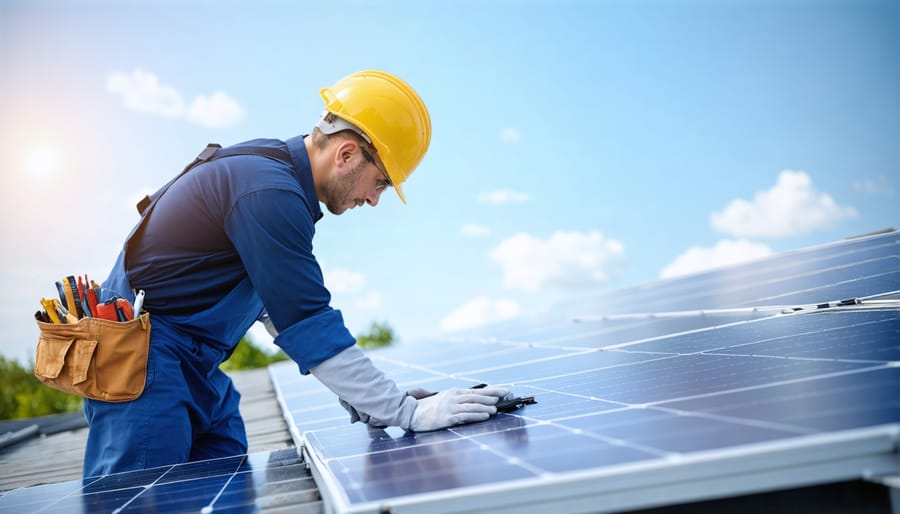
Equipment Coverage
Equipment coverage for solar installations protects your valuable renewable energy investment against physical damage from various risks. This essential coverage typically includes protection for solar panels, inverters, batteries, mounting hardware, and wiring systems against perils such as hail, wind, falling objects, and fire damage.
Most homeowners insurance policies offer basic coverage for roof-mounted solar systems, but it’s crucial to verify your system size coverage limits to ensure adequate protection. Some policies may require additional endorsements or riders for complete coverage, especially for ground-mounted systems or larger installations.
Your equipment coverage should also protect against electrical surges, mechanical breakdowns, and accidental damage during maintenance. Many insurers now offer specialized solar insurance that includes coverage for reduced energy production due to equipment damage, ensuring you’re protected not just from physical damage but also from potential income loss if your system isn’t performing optimally.
Remember to document your installation with photos and keep all maintenance records, as these can be valuable when filing claims for damaged equipment.
Performance Guarantee Coverage
Performance guarantee coverage offers homeowners peace of mind by ensuring their solar system generates the promised amount of electricity. This specialized insurance protects against energy production shortfalls, compensating you when your system underperforms due to factors like weather variations or unexpected equipment issues. Many solar installers include basic production guarantees, but additional coverage options can provide more comprehensive protection.
These policies typically cover the difference between guaranteed and actual energy production, either through direct compensation or by covering the cost of additional utility electricity needed. When combined with battery storage protection, you can ensure both your energy generation and storage systems are fully protected.
Most performance guarantee policies run for 20-25 years, matching the typical lifespan of solar panels. They often include annual performance assessments and maintenance recommendations to help maintain optimal system efficiency. Some insurers also offer flexible coverage options that can be customized based on your specific energy needs and system size.
Weather-Related Protection
Weather protection is a crucial aspect of solar insurance, as your panels face various natural elements year-round. Most comprehensive solar insurance policies cover damage from hail, strong winds, lightning strikes, and falling trees or branches. Storm coverage typically includes protection against flying debris and severe weather conditions that could crack or dislodge panels.
Many policies also address snow and ice damage, which can strain mounting systems and panels with excess weight. Coverage often extends to flood-related damage that affects ground-mounted systems or electrical components. While solar panels are built to withstand most weather conditions, having specific weather-related protection ensures you’re covered during extreme events.
It’s worth noting that some standard homeowners insurance policies may already include basic weather protection for solar installations, but dedicated solar insurance often provides more thorough coverage with higher limits and fewer exclusions. Always verify the specific weather events covered in your policy and understand any regional restrictions based on your area’s typical weather patterns.
Cost Considerations and ROI
Premium Factors
Several factors influence the cost of insuring your solar installation. The size and value of your system play a primary role, as larger installations typically require more coverage. Your location matters too – areas prone to severe weather events like hailstorms or hurricanes may face higher premiums due to increased risk.
The age and quality of your solar equipment also affect rates. Newer systems with advanced safety features and professional installation often qualify for better rates. Your choice of mounting system matters as well – roof-mounted panels may have different premium considerations compared to ground-mounted arrays.
Your claims history and overall home insurance record can impact costs, just as they do with standard homeowners insurance. Many insurers offer discounts for safety features like monitoring systems and surge protection devices. The contractor’s credentials and installation quality can also influence rates, as properly installed systems present lower risks.
Some insurance companies reward homeowners who bundle their solar coverage with other policies, potentially leading to significant savings. Regular maintenance and professional inspections can help keep your premiums manageable while ensuring your system’s longevity.
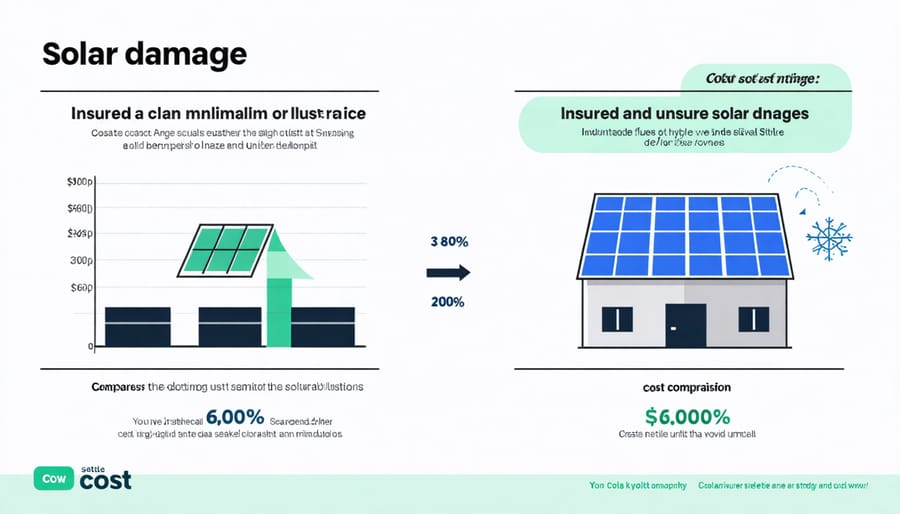
Value Protection Benefits
Investing in solar insurance provides substantial long-term financial protection for your renewable energy system. Beyond the immediate coverage for damage or theft, proper insurance safeguards your solar investment’s value over its entire lifespan, typically 25-30 years. This protection ensures you won’t face unexpected out-of-pocket expenses for repairs or replacements, maintaining your system’s efficiency and energy-saving benefits.
Insurance also helps preserve your property value, as potential homebuyers often look favorably upon properly protected solar installations. Many policies include coverage for lost income from solar production during repairs, ensuring you don’t lose the financial benefits of your system when it’s temporarily out of service.
Additionally, some insurance providers offer inflation protection, meaning your coverage automatically adjusts to match rising replacement costs over time. This feature is particularly valuable given the long-term nature of solar investments. By maintaining comprehensive coverage, you’re not just protecting your equipment – you’re securing your path to energy independence and sustainable savings for decades to come.
How to Choose the Right Coverage
Selecting the right insurance coverage for your solar system doesn’t have to be complicated. Start by documenting your entire solar installation, including panels, inverters, batteries, and mounting equipment. Take clear photos and keep all purchase and installation receipts – these will be invaluable when discussing coverage options with insurers.
Next, evaluate your specific risks. Consider your location’s weather patterns, the age and condition of your roof, and any nearby trees that could potentially damage your system. This information helps determine whether you need additional coverage beyond standard homeowners insurance.
Contact multiple insurance providers and ask these key questions:
– Is solar equipment automatically covered under existing policies?
– What specific perils are included and excluded?
– Are there coverage limits for solar equipment?
– Does the policy cover both property damage and liability?
– What additional endorsements are available?
– How does the claims process work for solar-related incidents?
Most insurers offer two main coverage options: adding solar equipment to your existing homeowners policy through an endorsement, or obtaining a separate policy specifically for your solar system. Compare deductibles, coverage limits, and premium costs between these options.
Consider future-proofing your coverage by choosing a policy that allows for system upgrades or expansions. Also, look for coverage that includes both physical damage and potential loss of income if your system stops working due to a covered event.
Remember to review and update your coverage annually, especially after any modifications to your solar system or changes in your area’s weather patterns. This ensures your investment remains properly protected as circumstances change.
Protecting your solar investment is a crucial step in ensuring long-term energy independence and financial security. As we’ve explored throughout this guide, proper insurance coverage safeguards your solar panels against unexpected damage while maintaining your peace of mind. Whether you choose to extend your homeowners insurance, opt for specialized solar coverage, or select a comprehensive warranty package, the important thing is taking action to protect your investment.
Remember that solar panels are a significant investment that can add substantial value to your home while reducing your carbon footprint and energy bills. By securing appropriate insurance coverage, you’re not just protecting the panels themselves – you’re safeguarding your path to sustainable living and energy independence.
Take time to review your existing coverage, discuss options with insurance providers, and select a policy that best fits your needs and budget. Don’t wait until after an incident occurs to think about protection. Contact your insurance provider today to ensure your solar investment is properly covered for years to come.

